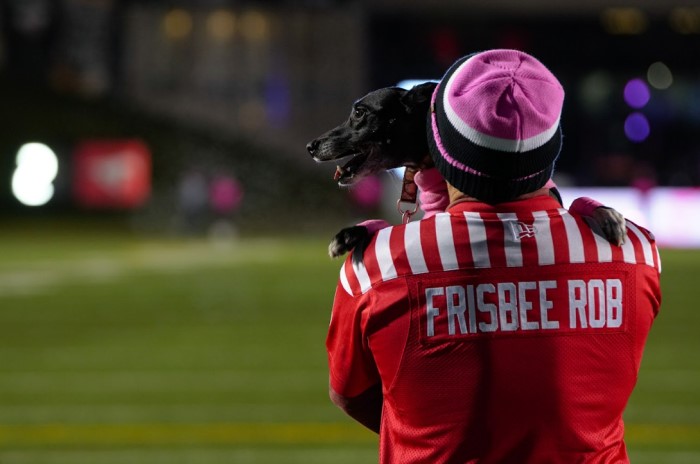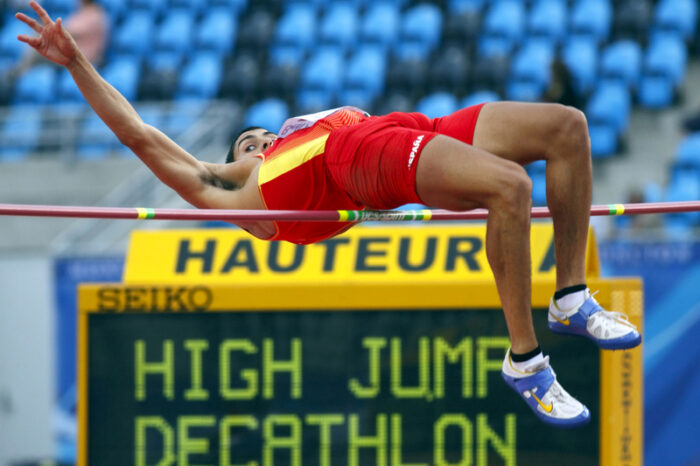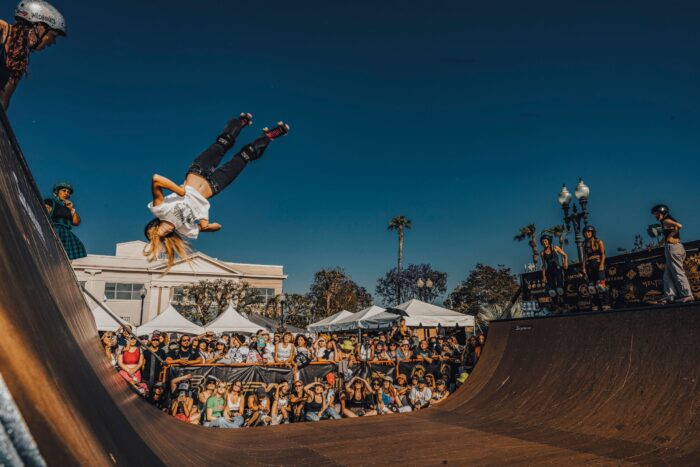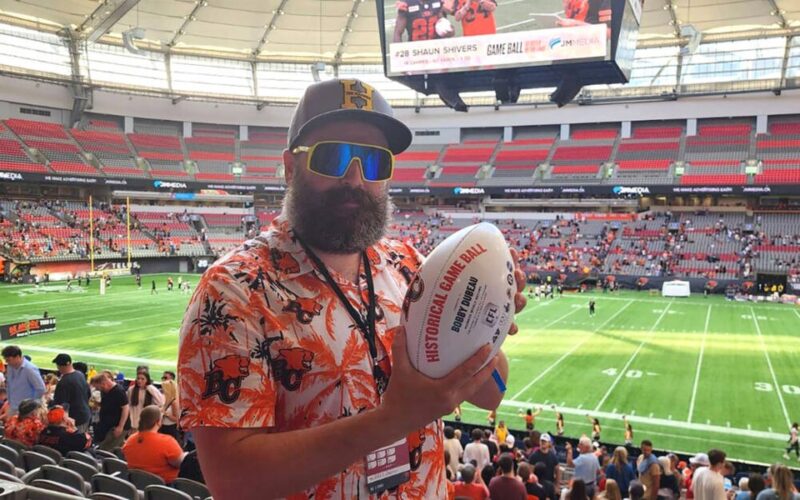This Sunday, September 17 will be the 36th annual Terry Fox Run. In literally hundreds of towns and cities all across Canada, people of all ages will run to raise money for research for curing and treating cancer, the disease that killed Fox in 1981.
For many Canadians, the phrase "Terry Fox Run" has become so familiar, it's easy to take for granted. But as we get ready to lace up our running shoes and hit the pavement once again, we'd like to take a moment to look at just how monumental this event is.
Young and determined
People running in a Terry Fox Run in 2003 in Toronto. (Getty Embed)
Terry Fox was always a very determined person. He impressed his coaches and teachers by improving every summer. As he moved into high school, he began to beat out fellow students who appeared to be better natural athletes simply because he worked the hardest.
Physical limitations didn't matter. His greatest passion was for basketball, even though he never grew higher than 1.78 m (5 ft. 8 in.). He went from barely playing in a game in Grade 8 to being named his school's athlete of the year by Grade 12.
It was also in school where his physical education teacher made a suggestion that would later affect his life. He said Terry should try long distance running, which he did out of respect for his coach.
Cancer diagnosis
In 1977, Terry experienced another, far-more life-changing moment. He was diagnosed with osteosarcoma, an aggressive cancer that starts in the bones. At the time, the best treatment was to amputate, or cut off, his leg, then use chemotherapy to try and fully kill the cancer in his body. Doctors still only gave him a 50% chance of survival.
Terry didn't hesitate, going through 16 months of chemotherapy. He was given a prosthetic, or artificial leg, and used it to continue playing sports, such as golf. He also began playing wheelchair basketball, joining a team led by future activist Rick Hansen (and he won three national titles playing the sport!).
But he had an even bigger plan.
Learning to run again
Terry takes a rest in between running in 1980. (Getty Embed)
Terry had read about Dick Traum, the first amputee to run in the New York City Marathon (a marathon is a long distance race that lasts 42 km, or 26 mi.). After his surgery, he told friends and family that he was training to run a marathon himself. But privately, he wanted to go even further.
After months of painful training—full of blisters, bruises, and learning to use a less-than-ideal prosthetic leg—he ran in a 27 km (17 mi.) race in Prince George in September, 1979. Once he finished, he announced his grand plan to the country.
He wanted to run across Canada to raise money for cancer research. He appealed for funding from the Canadian Cancer Society and received donations of a van from Ford and shoes from Adidas. But he refused to accept sponsorship from anyone who wanted their name to appear on his clothing.
He just wanted it to be about the goal of funding research, which he knew was in need of money.
The Marathon of Hope
Running through Ontario and followed by fans, supporters, and an escort. (Getty Embed)
On April 12, 1980, he began his run in Newfoundland. Nearly every single day for the next five months, he ran a full marathon. Doctors warned him that he was risking his life by pushing it so hard. He suffered pain all over his body, and by August was in deep pain. But by this time, he was also a national hero.
Everywhere he went, he was greeted by cheering crowds. And donations. The run, called The Marathon of Hope, would go on to raise $1.7 million.
September 2, 1980, the day he announced that The Marathon of Hope was over. (Getty Embed)
On September 1, he was near Thunder Bay, Ontario, when an intense fit of coughing forced him to stop running. The next day, he held a press conference saying that after 143 days and 5,373 km (3,339 mi.), The Marathon of Hope was over. The cancer had spread to his lungs, and he needed new treatment.
Despite doctors' efforts, Terry died the next summer, on June 28, 1981.
An unmatched legacy
Terry Fox Mountain in British Columbia. (Getty Embed)
The legacy of Terry Fox isn't that he was a perfect person or a saint. It's that he was a pretty ordinary person who did something truly extraordinary. And that made him a hero to more than just those suffering from cancer.
By the time he died, not only did the entire globe know his name—by the following September, countless Canadians would be running in the first ever Terry Fox Run. Within a few years, dozens of countries around the world were also running in his honour.
He inspired politicians and lawmakers, rock stars and actors, doctors and activists. In Canada, over 30 streets are named after him, plus 14 schools, 14 other buildings, seven statues, an icebreaker, nine hiking trails, several monuments, and even a mountain!
Maybe most important though? Today, a person who gets osteosarcoma, the same cancer as Terry, has an 80% chance of survival. And you can bet that the $750 million total raised by Terry Fox Runs helped those chances improve.
Have a great run, everyone! Thank you, Terry.
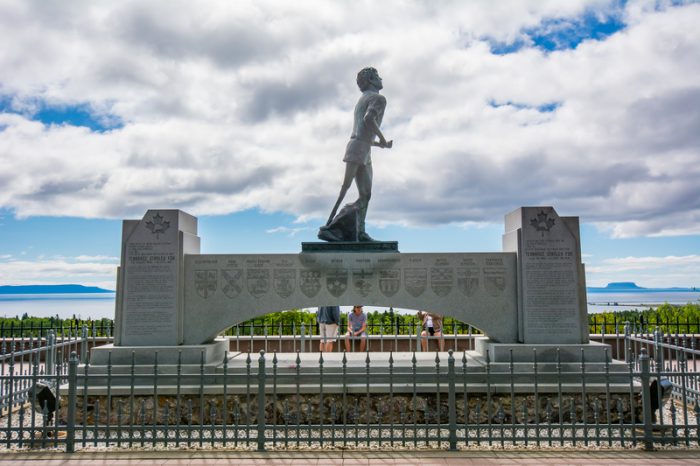 The Terry Fox Memorial in Thunder Bay, Ontario. (Lyndonwiens | Dreamstime)
The Terry Fox Memorial in Thunder Bay, Ontario. (Lyndonwiens | Dreamstime)

